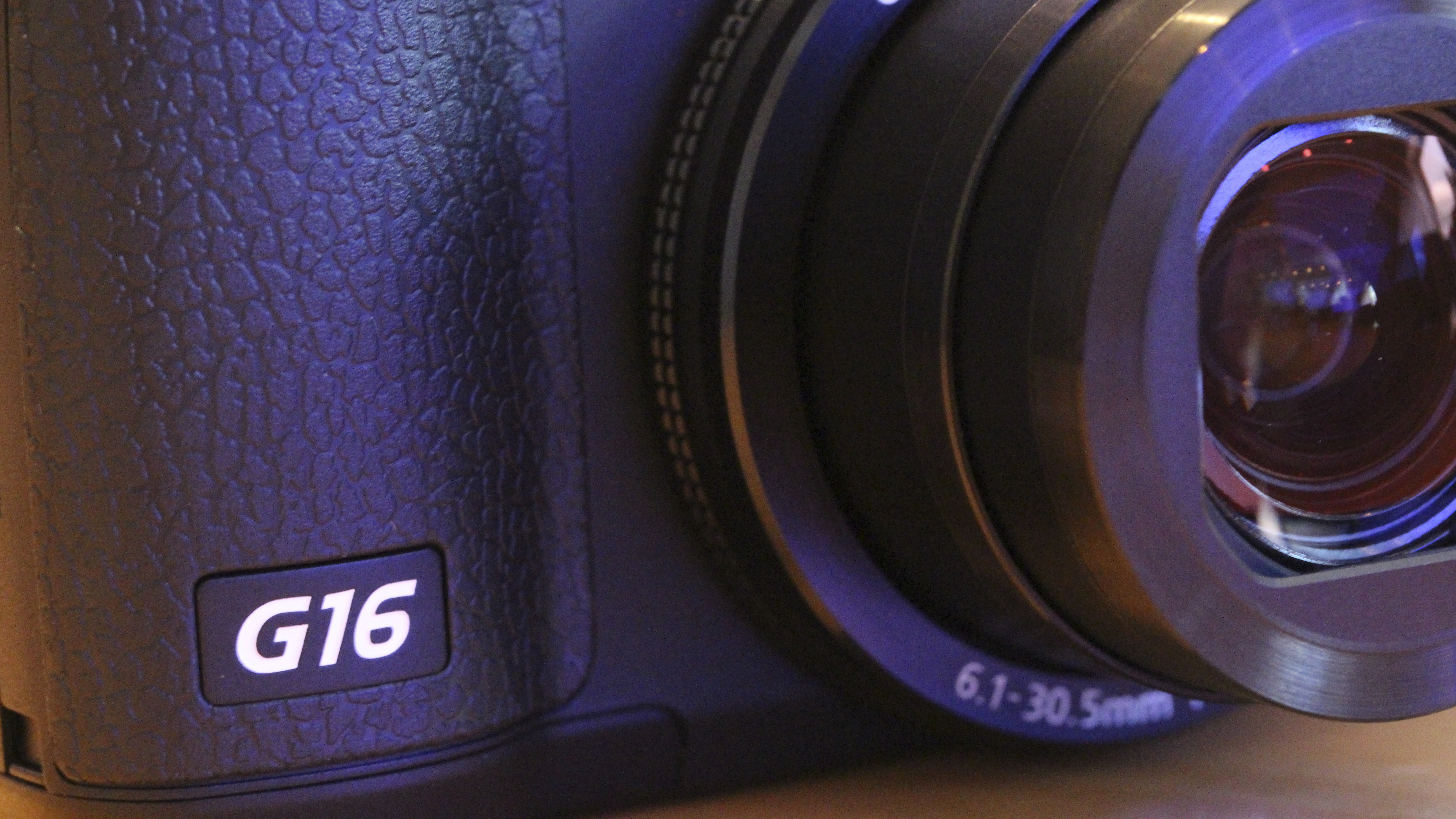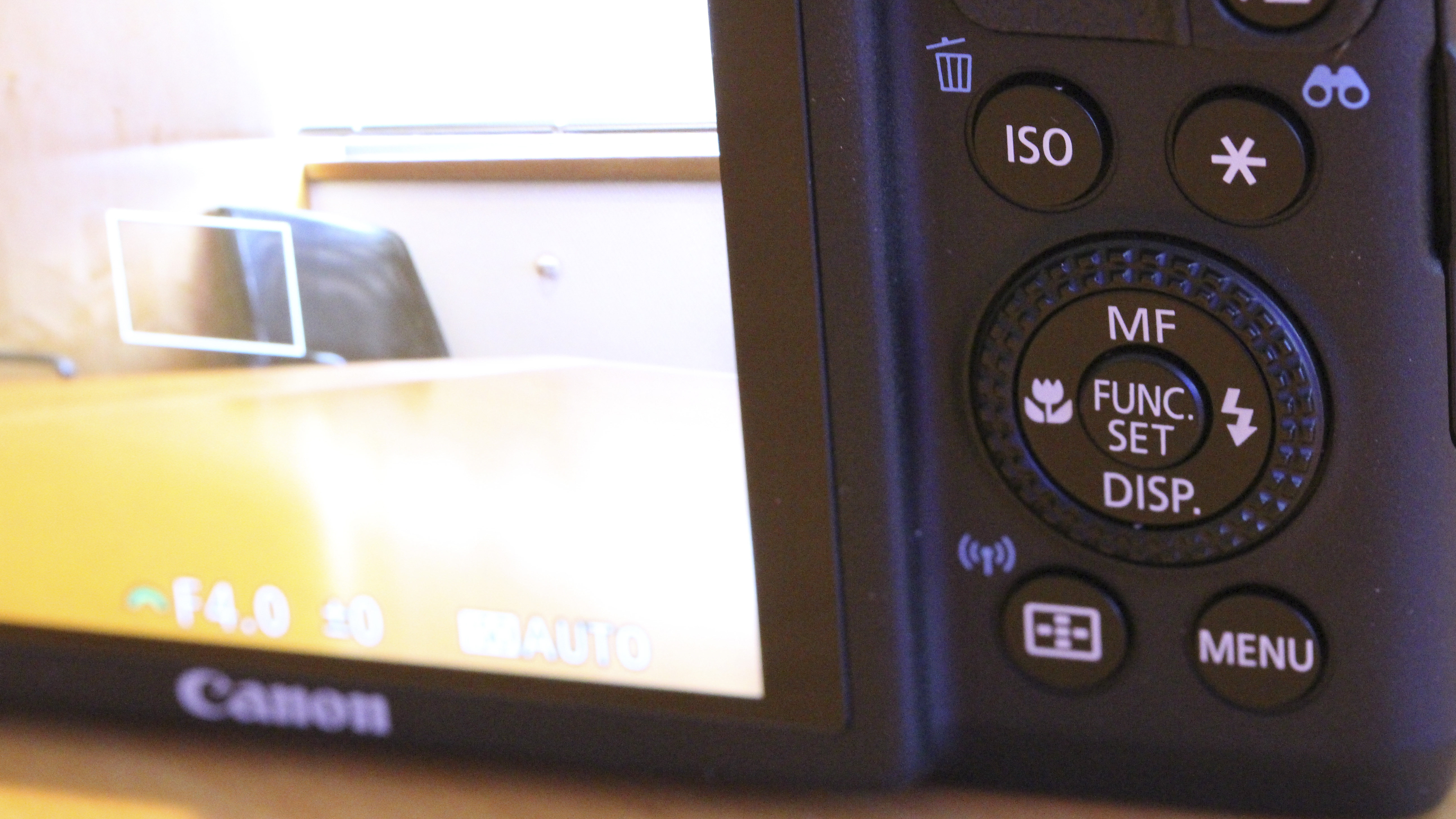Why you can trust TechRadar
Much of what can be said about the G16's build quality and handling is true of its predecessor, the G15.
The G15 slimmed down considerably from the G12 by removing the articulating screen, and Canon has evidently received sufficient feedback that this welcome to keep the same design for the latest iteration of the camera.

Canon isn't shy about targeting cameras at the advanced photographer – it often refers to DSLR owners in marketing materials. This is reflected in the number of dials and direct access buttons found on the camera. On the top are two overlapping dials, a mode dial for switching between the various exposure options on the camera, including fully automatic and semi-automatic modes (aperture priority and shutter priority). There's also space for a couple of custom groups of settings, which is pretty useful if you often find yourself shooting one particular type of scene, such as monochrome or low light.
Slightly underneath this dial is the exposure compensation dial, which is handily reached by the thumb and is something that was a welcome addition to last year's G15.
In order to change the aperture or shutter speed (depending on the mode you're shooting in), a small dial on the grip at the front of the camera is used. This is easy to reach with your finger when holding the camera one-handed. If you're shooting in fully manual mode, the dial at the front of the camera is used for aperture, and the scrolling dial on the back of the camera is used for shutter speed.
This scrolling dial on the back of the camera doubles up as a four way directional pad, which is used with other buttons to make changes to settings. There's been a slight rejig when compared with the G15, with some buttons being moved around. For instance, there is now a dedicated ISO (sensitivity) button instead of it being found as one of the options around the navigational dial. This seems to come at the expense of a dedicated metering button which is now missing.

Around the navigation dial, you'll now find access to focusing types, flash types and a way to quickly switch to manual focusing. There's also a Display option for changing the settings displayed on the screen.
There's a fairly wide array of other buttons on the back of the camera, including a dedicated one for changing the autofocus point. This is styled in the same way as the button on Canon's range of DSLRs, so if you're coming from owning one of those, you'll be at home here. This AF position button also doubles up as the button to activate Wi-Fi when you're in playback mode.
To change the AF point you simply need to press the AF point button then use the directional keys or scrolling dial to reach the point you need. Although this is easy, it's not the quickest of operations so you may find leaving the AF point in the centre of the screen and focusing and recomposing is speedier for fast unfolding action.
All of the camera's operation is carried out via these physical buttons as there's still no touchscreen for the G series. This seems like a bit of a shame when you consider that the S range has an excellent one, but perhaps this is to keep costs down or maybe it's because the camera is aimed at traditionalists.

Zooming in and out of the G16's 5x optical zoom range is smooth and fluid and is achieved via a switch around the shutter button. You can switch on digital zooming in the menu, but only when you're not shooting in raw format, which is a bit of an annoyance. When you have digital zoom activated, the zoom will pause slightly before straying into digital territory to allow you to keep an eye on using only the optical zoom.
Canon hasn't changed its standard compact camera menu for some time, so if you're an existing owner, you shouldn't have any trouble here. It's pretty sensibly arranged but you may find you don't use it all that often anyway as a sort of quick menu, accessed by hitting the function button in the centre of the scrolling dial, has all of the settings changes you're likely to want with any sense of immediacy.
To access the Wi-Fi element of the camera, first of all you need to be in playback mode since all you can do is share / upload existing images. If you register with Canon Image Gateway you can share directly from the camera to social networking sites such as Facebook, Twitter and Flickr. It's a little annoying having to do this separately from the camera using a computer, but once it's done it's pretty easy to use.
You can also set up your smartphone or tablet to send the image to for uploading and sharing if you don't have access to a Wi-Fi network at the time. Again, once the initial set-up has taken place it's very quick to share between devices.
Anyone that is stepping up from another Canon compact camera, or perhaps an older G series model, should be very much at home with the G16.
Amy has been writing about cameras, photography and associated tech since 2009. Amy was once part of the photography testing team for Future Publishing working across TechRadar, Digital Camera, PhotoPlus, N Photo and Photography Week. For her photography, she has won awards and has been exhibited. She often partakes in unusual projects - including one intense year where she used a different camera every single day. Amy is currently the Features Editor at Amateur Photographer magazine, and in her increasingly little spare time works across a number of high-profile publications including Wired, Stuff, Digital Camera World, Expert Reviews, and just a little off-tangent, PetsRadar.

